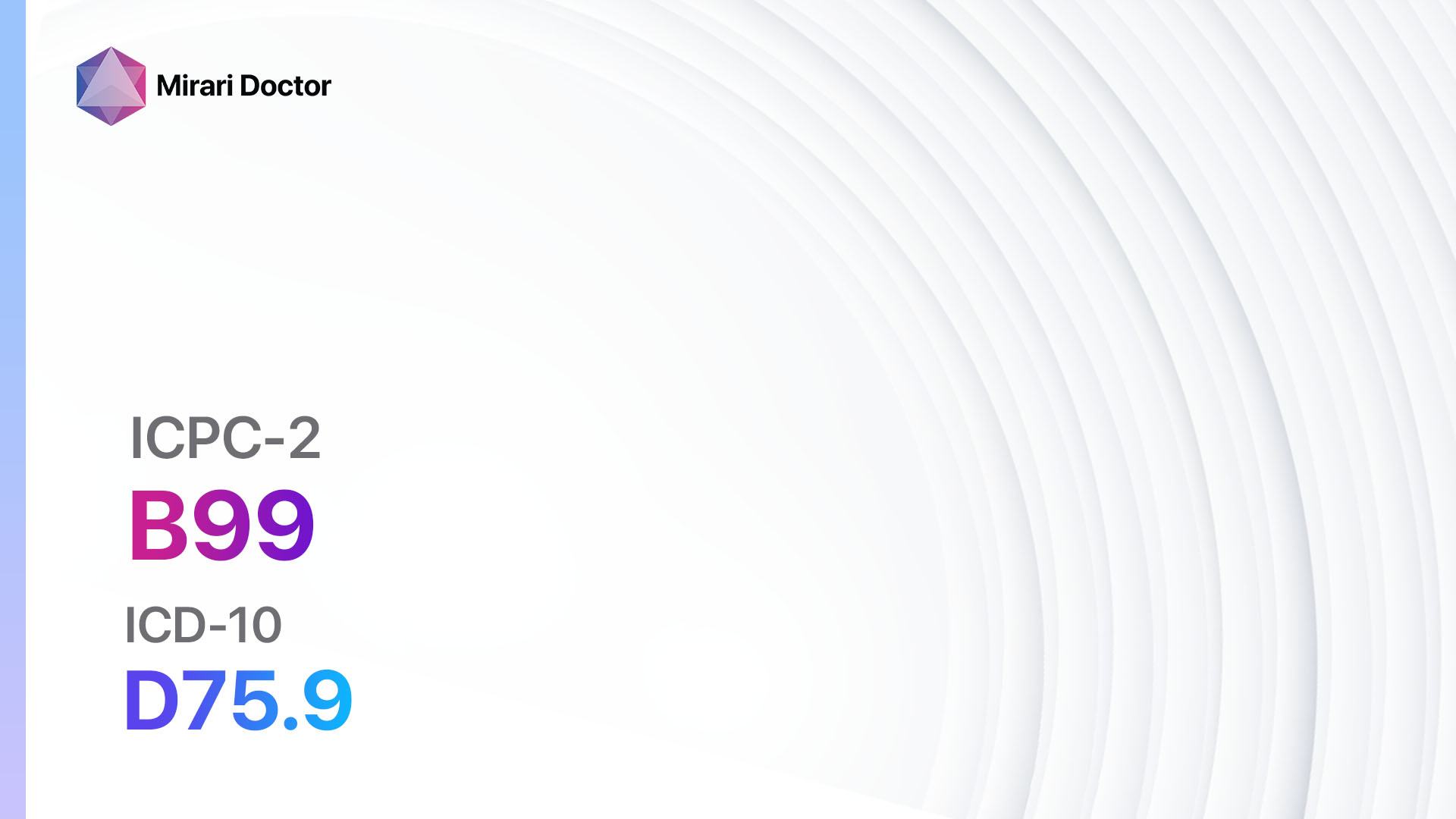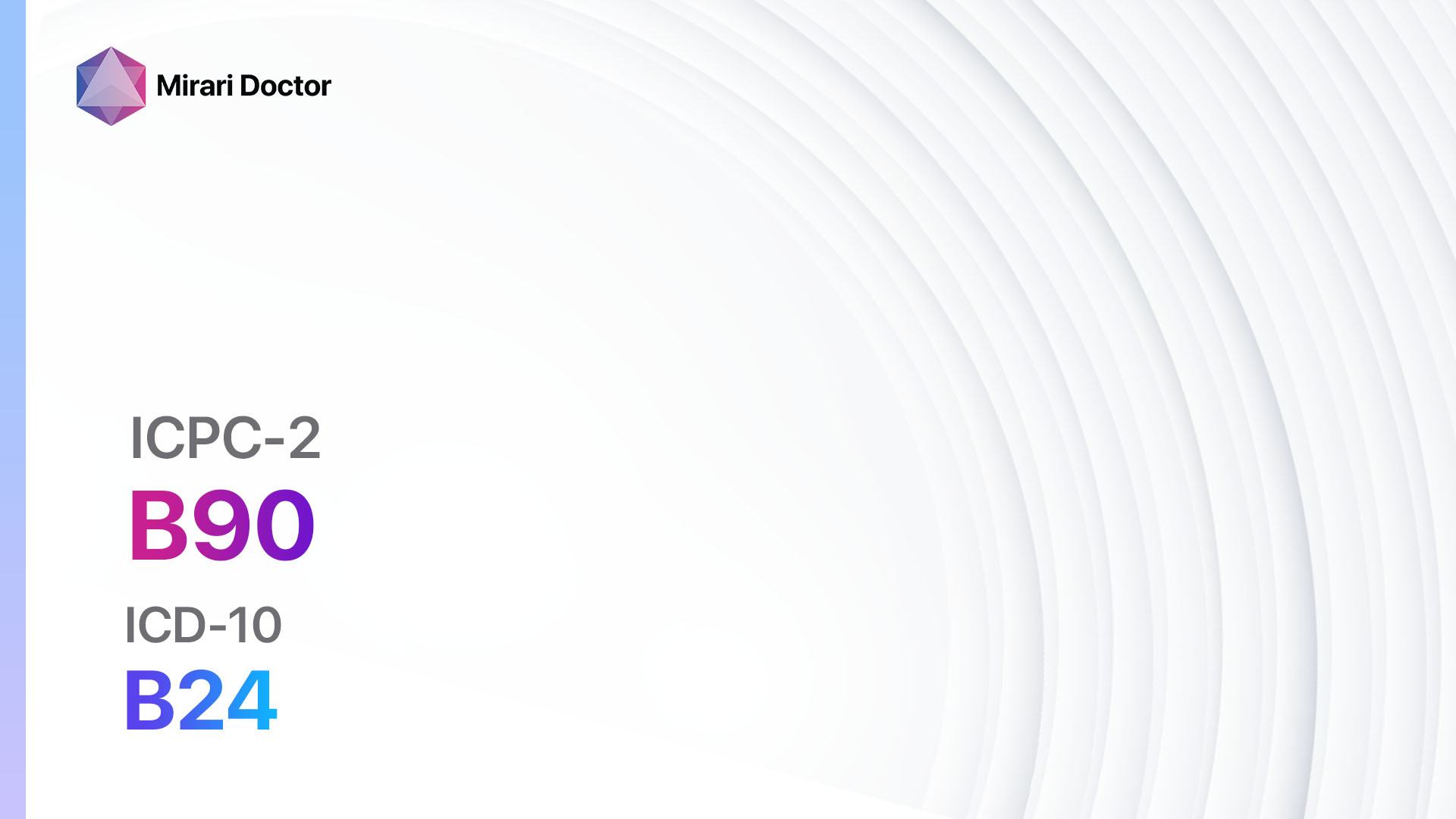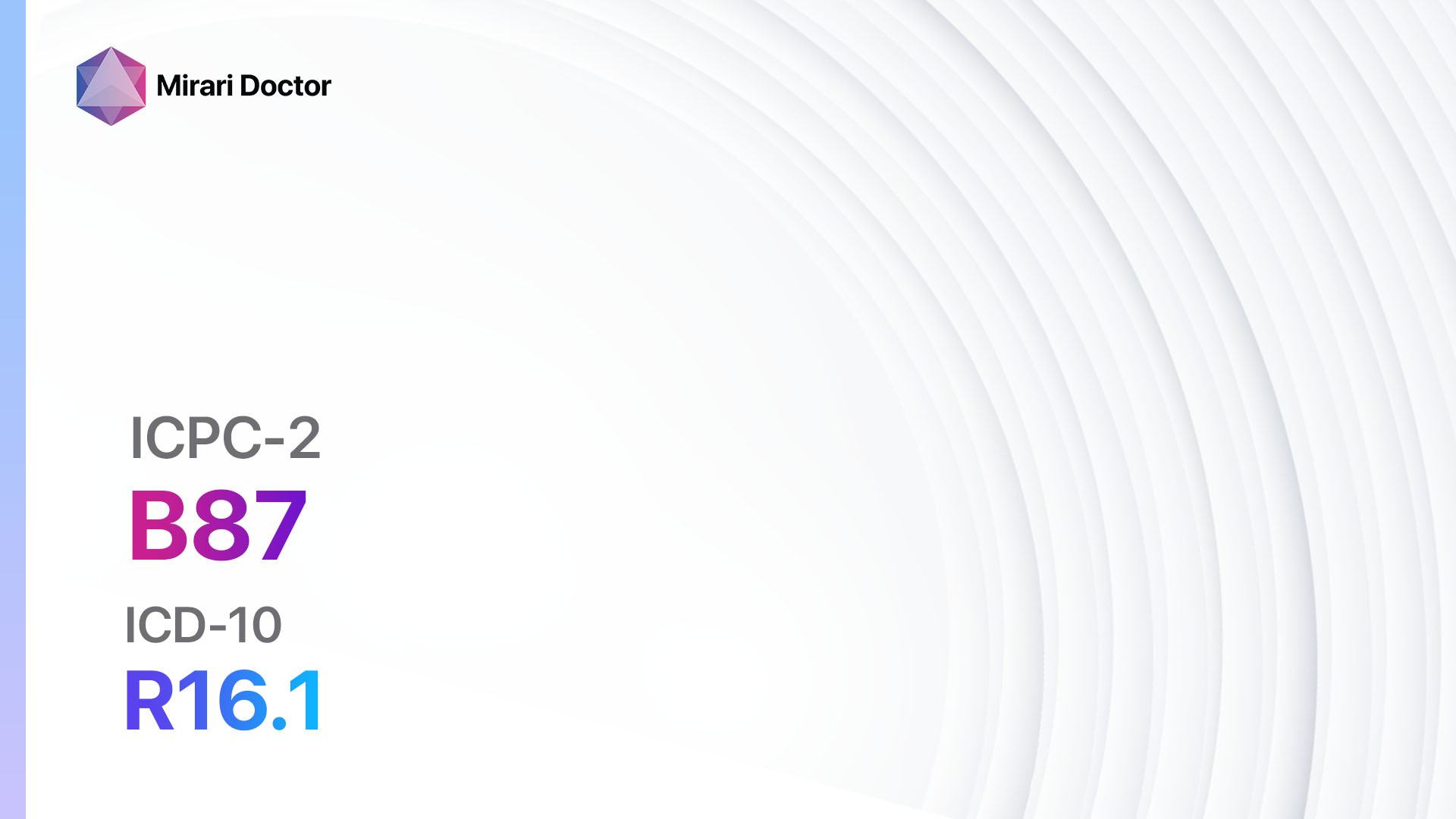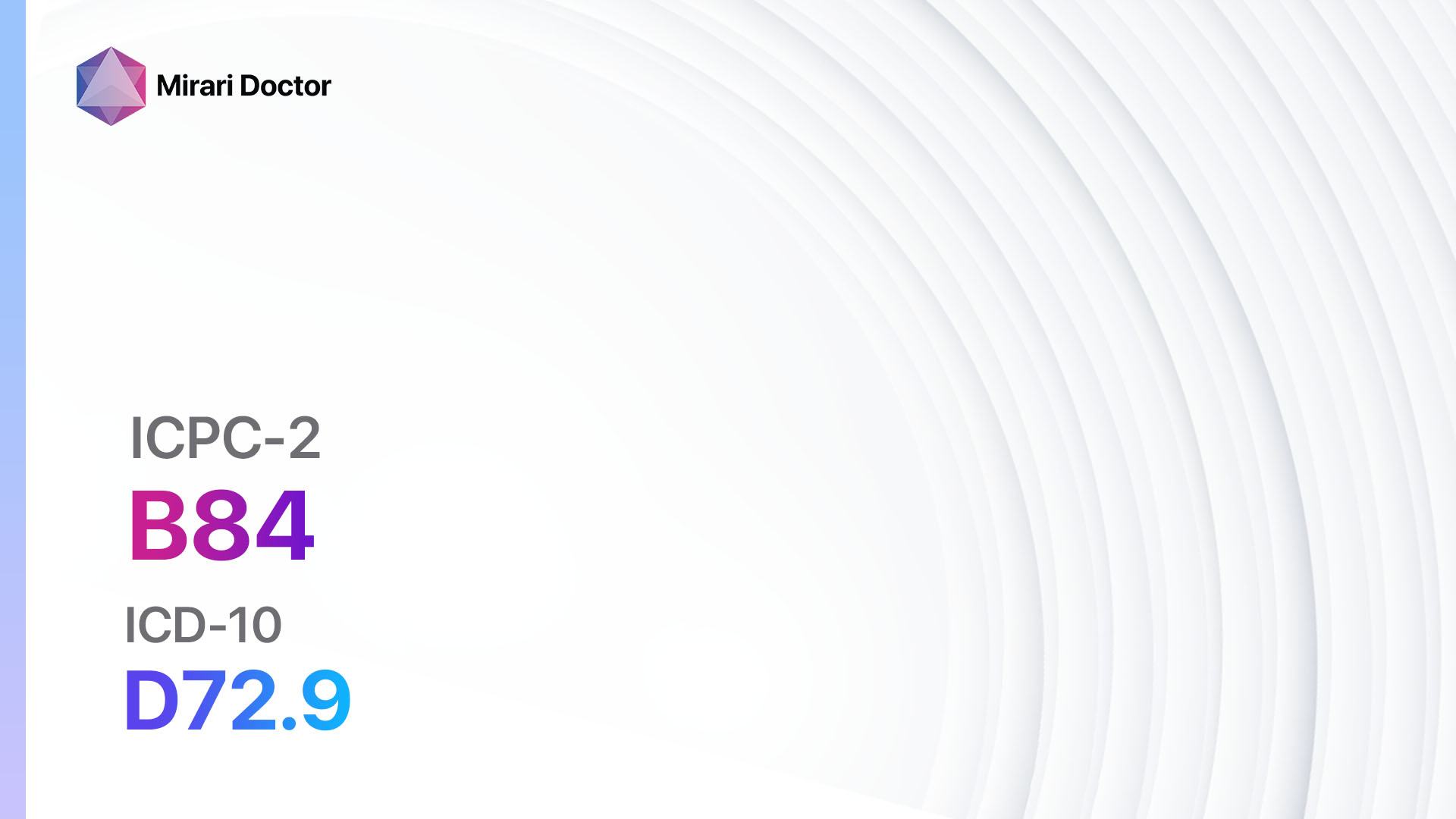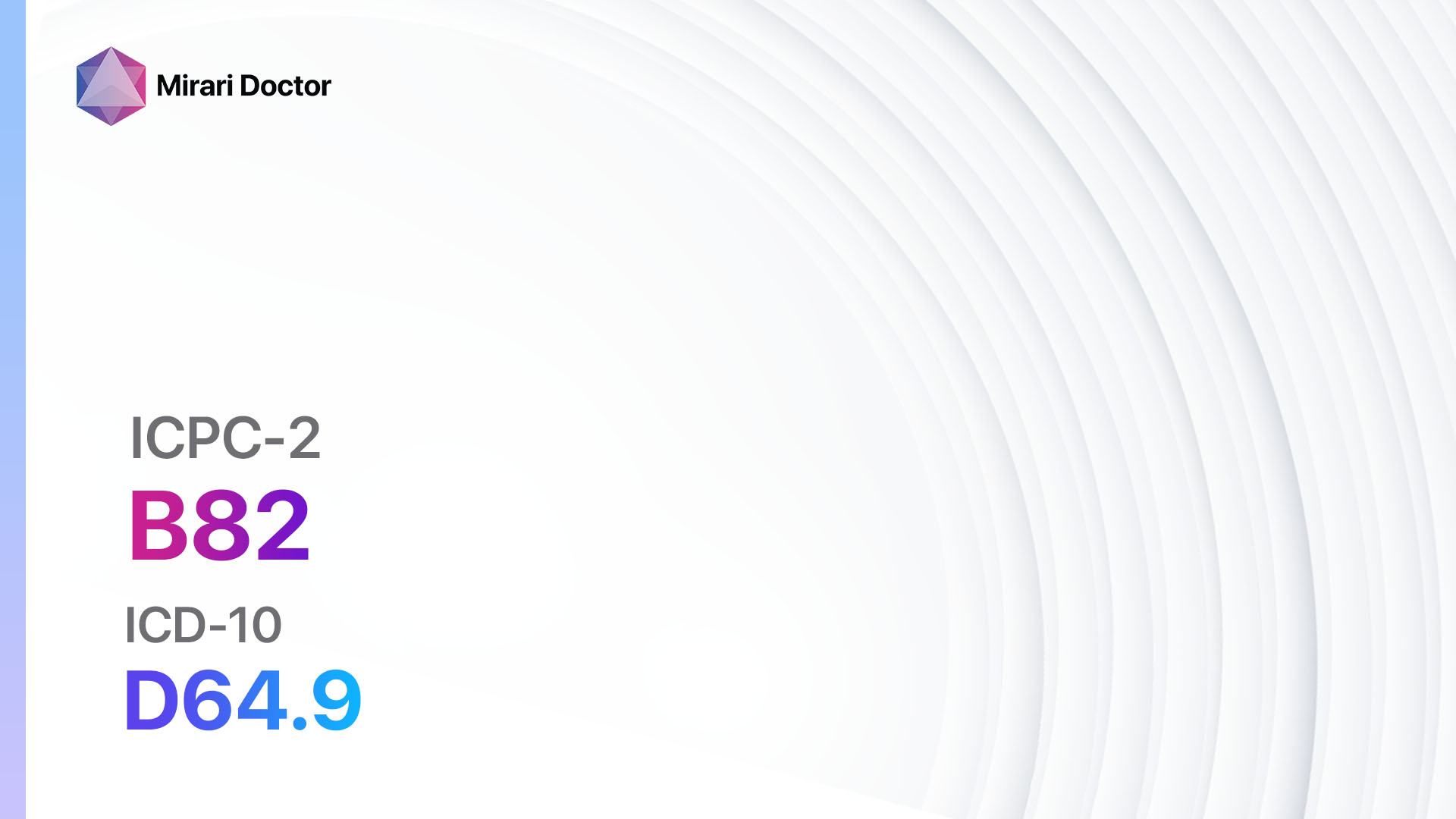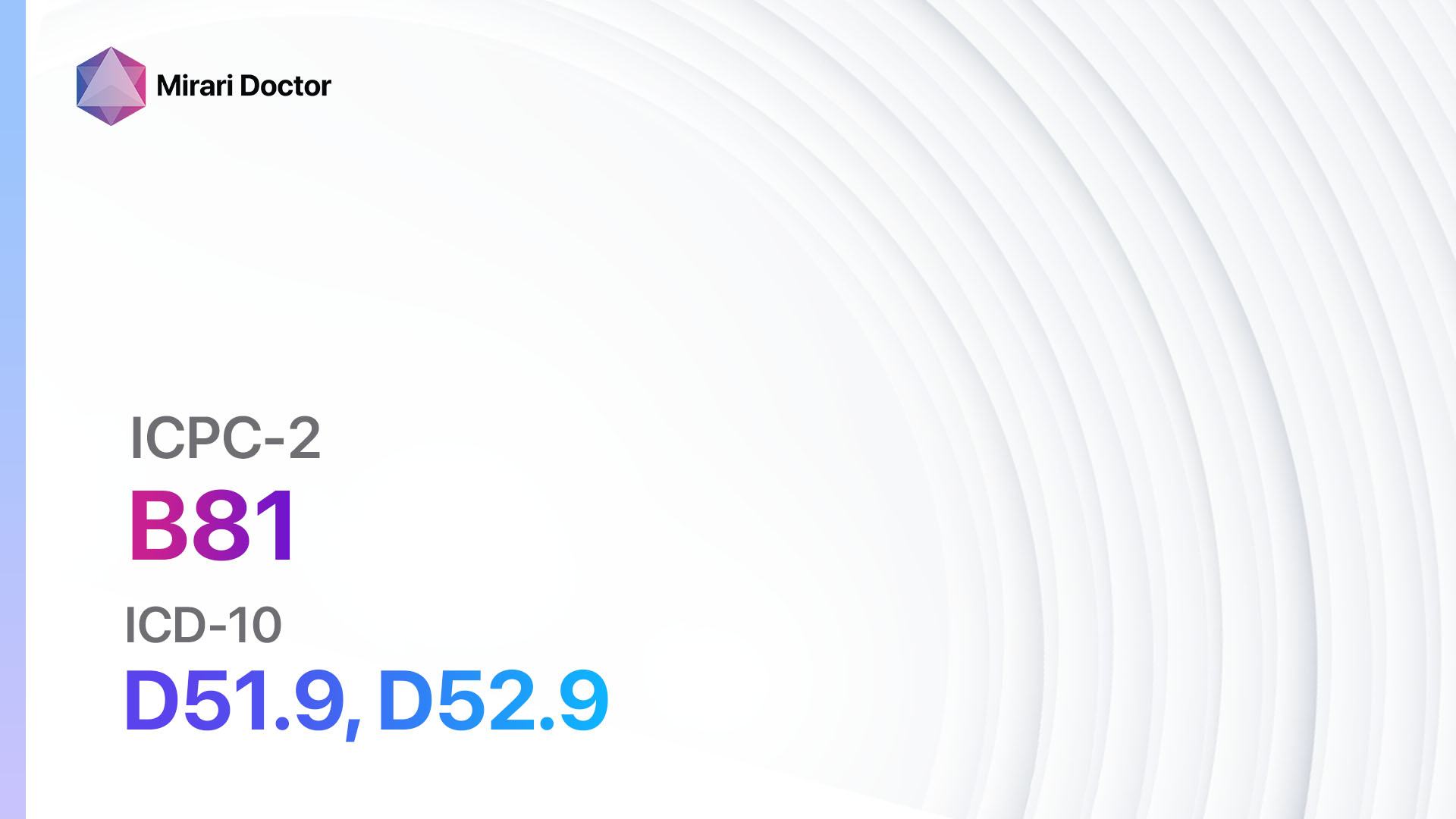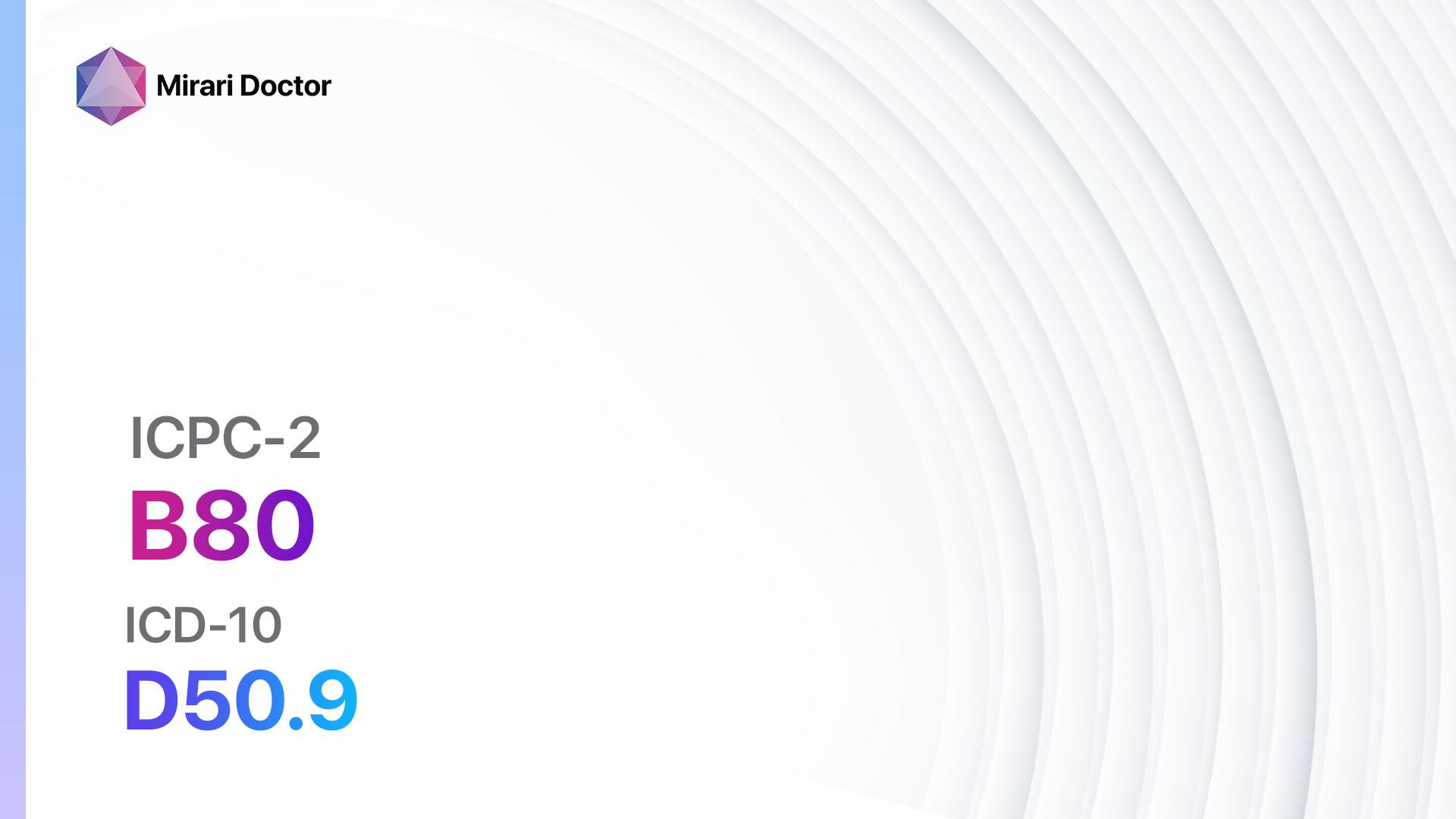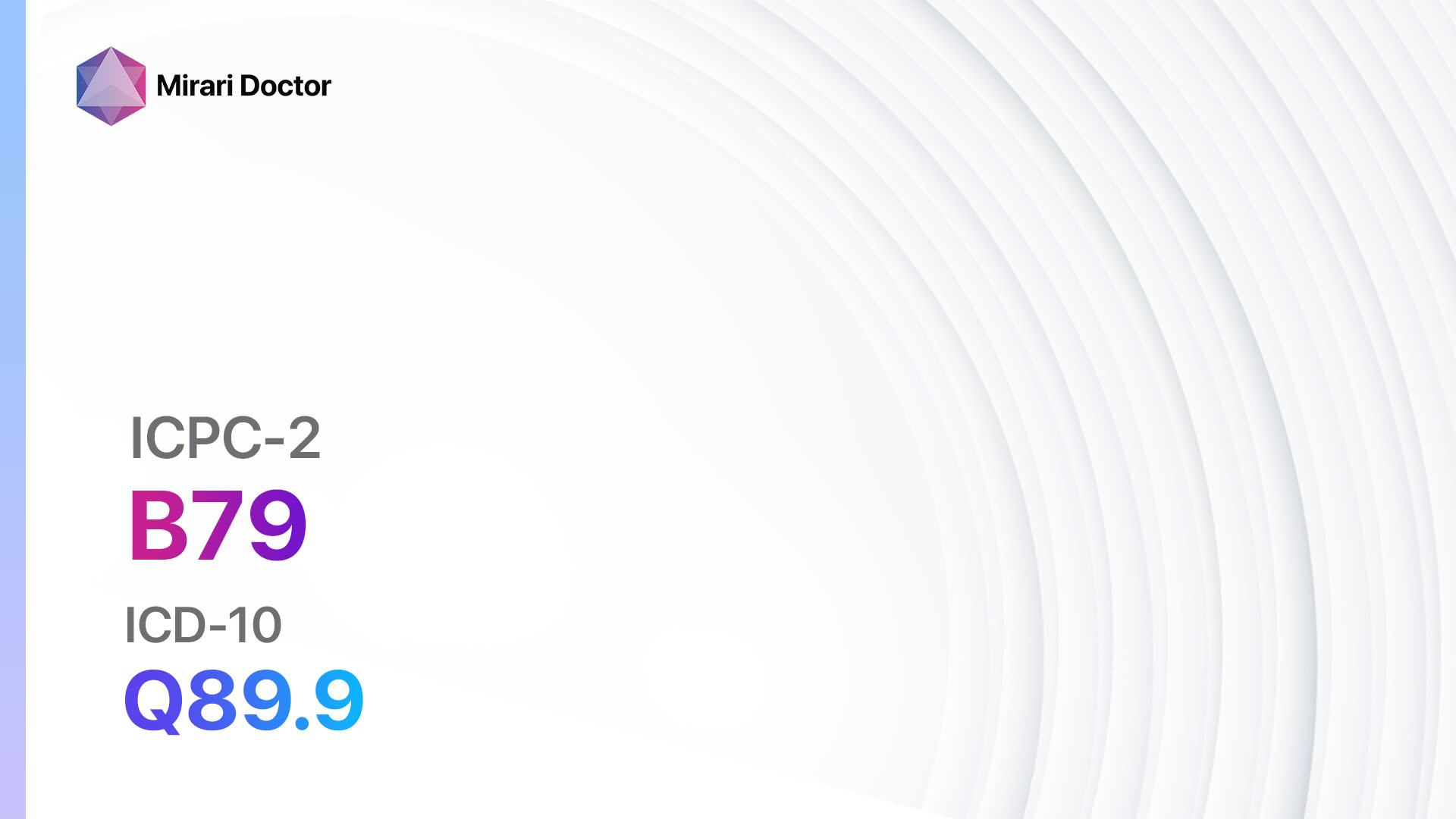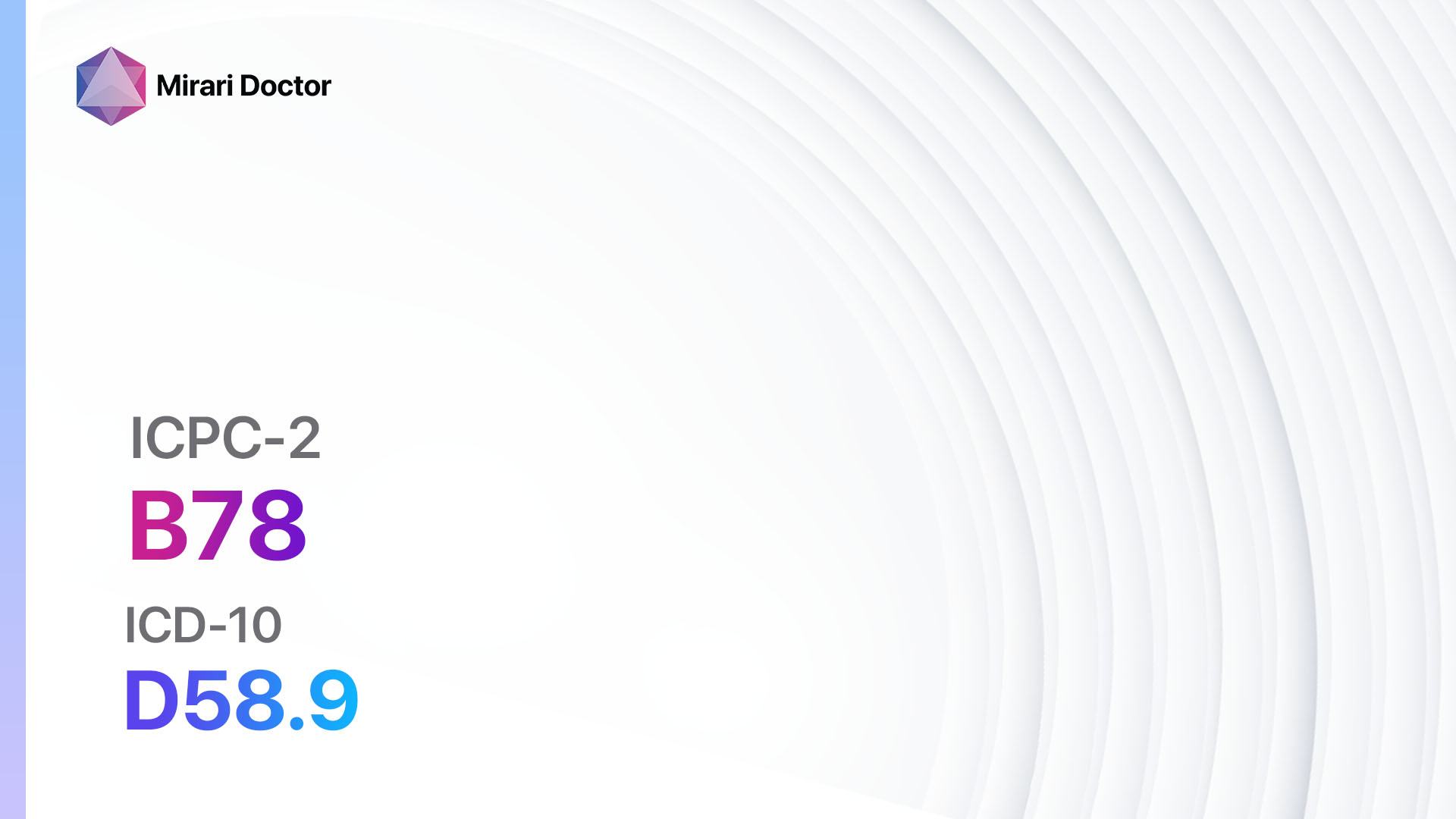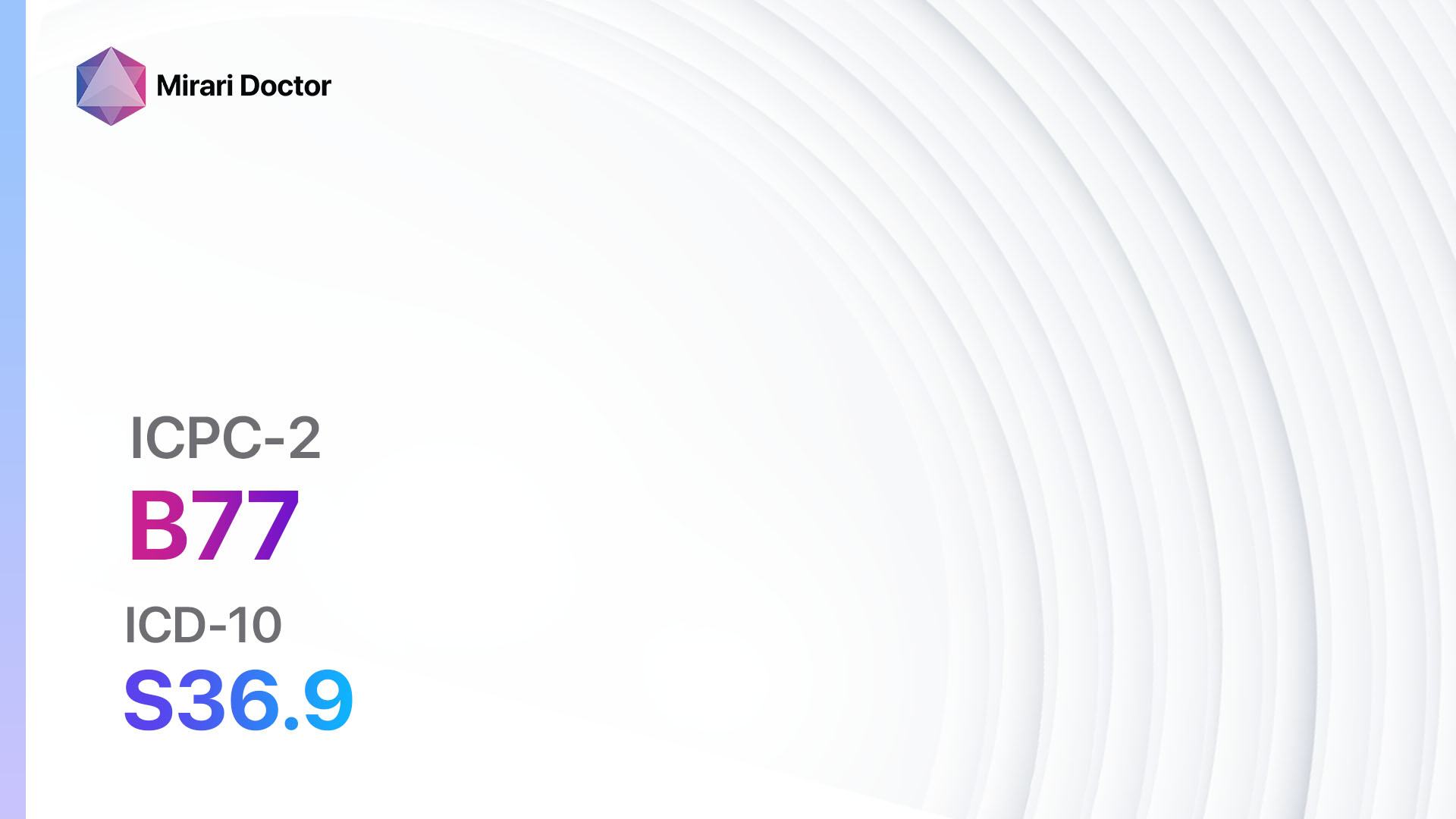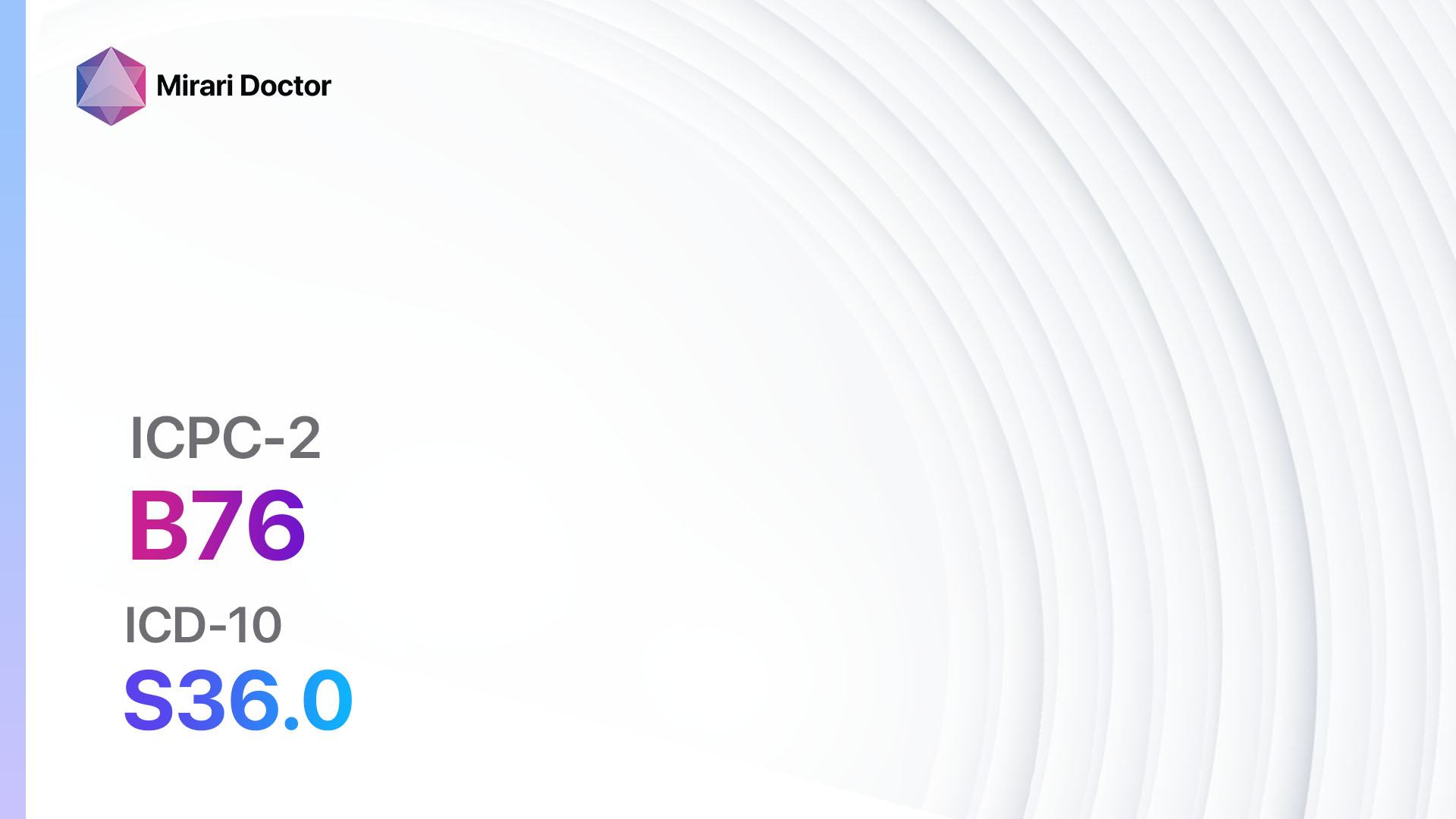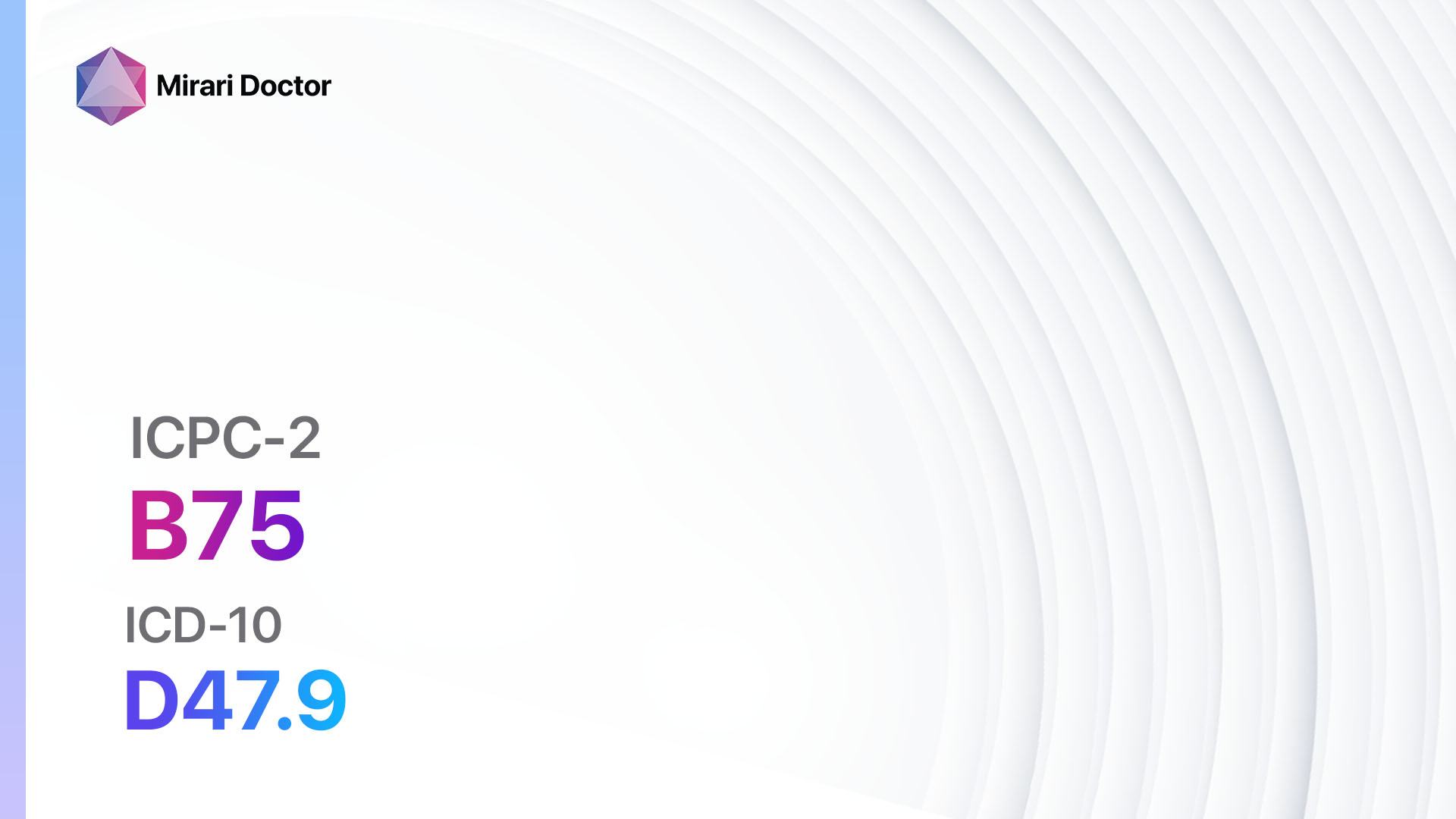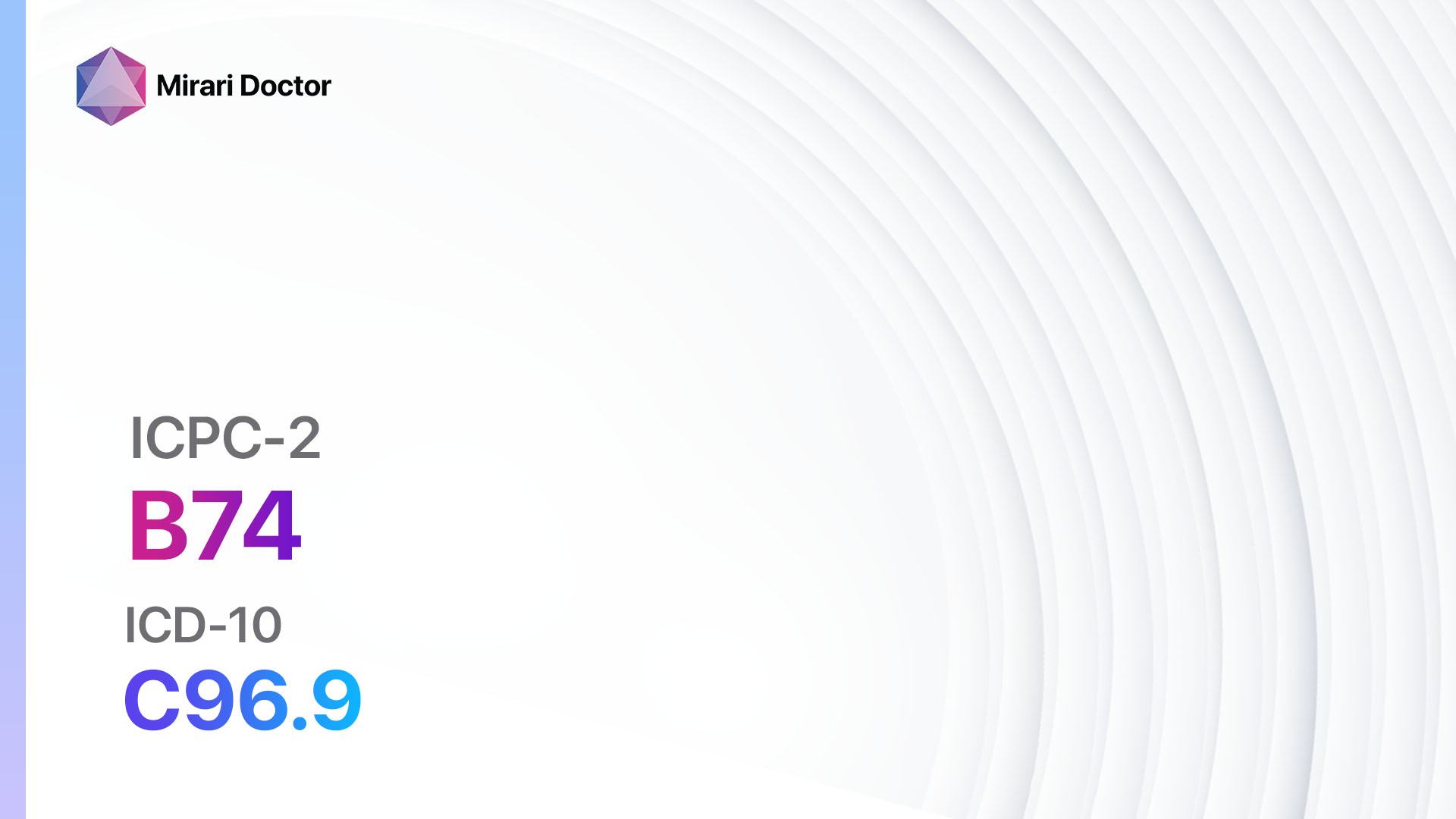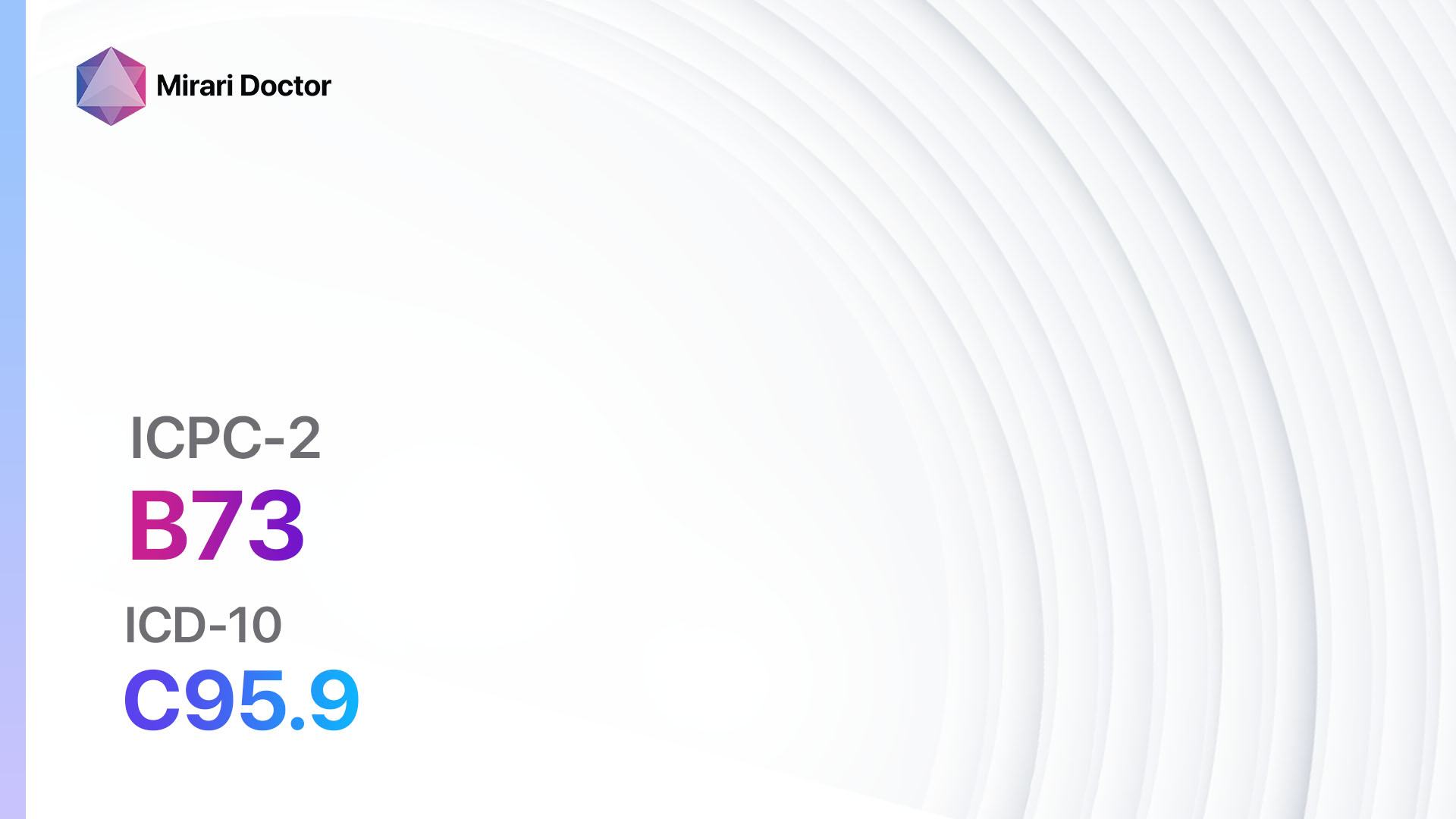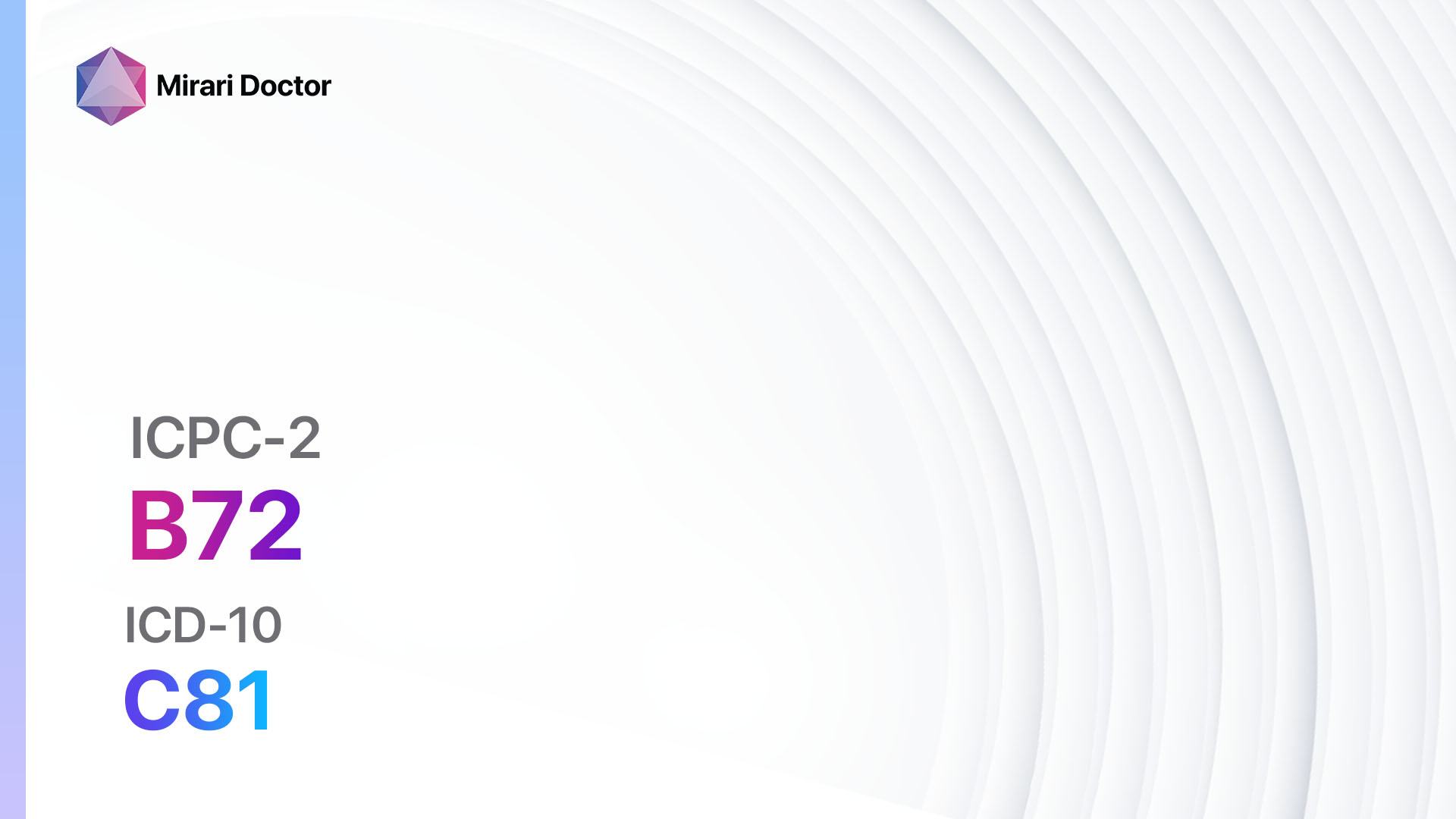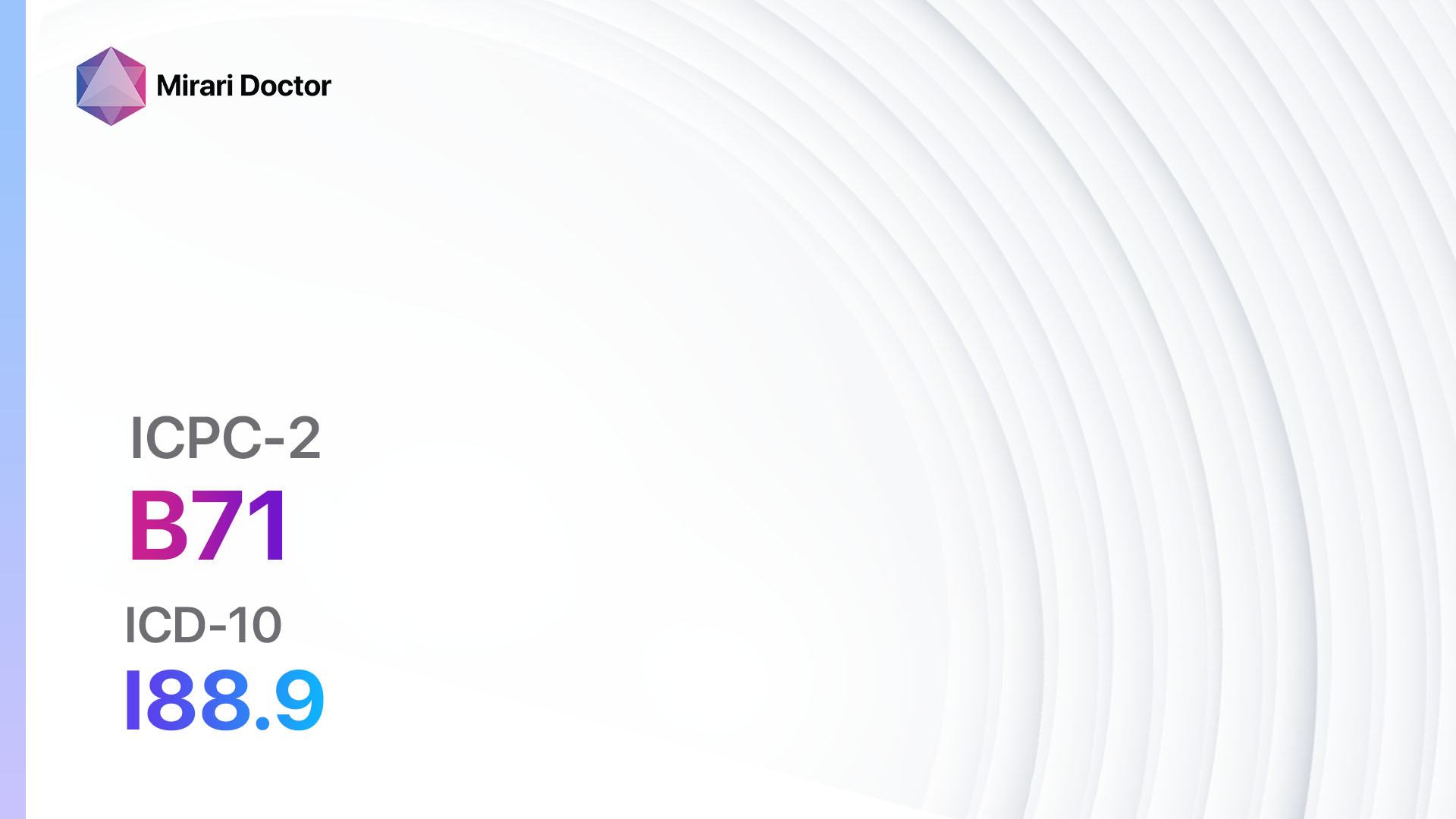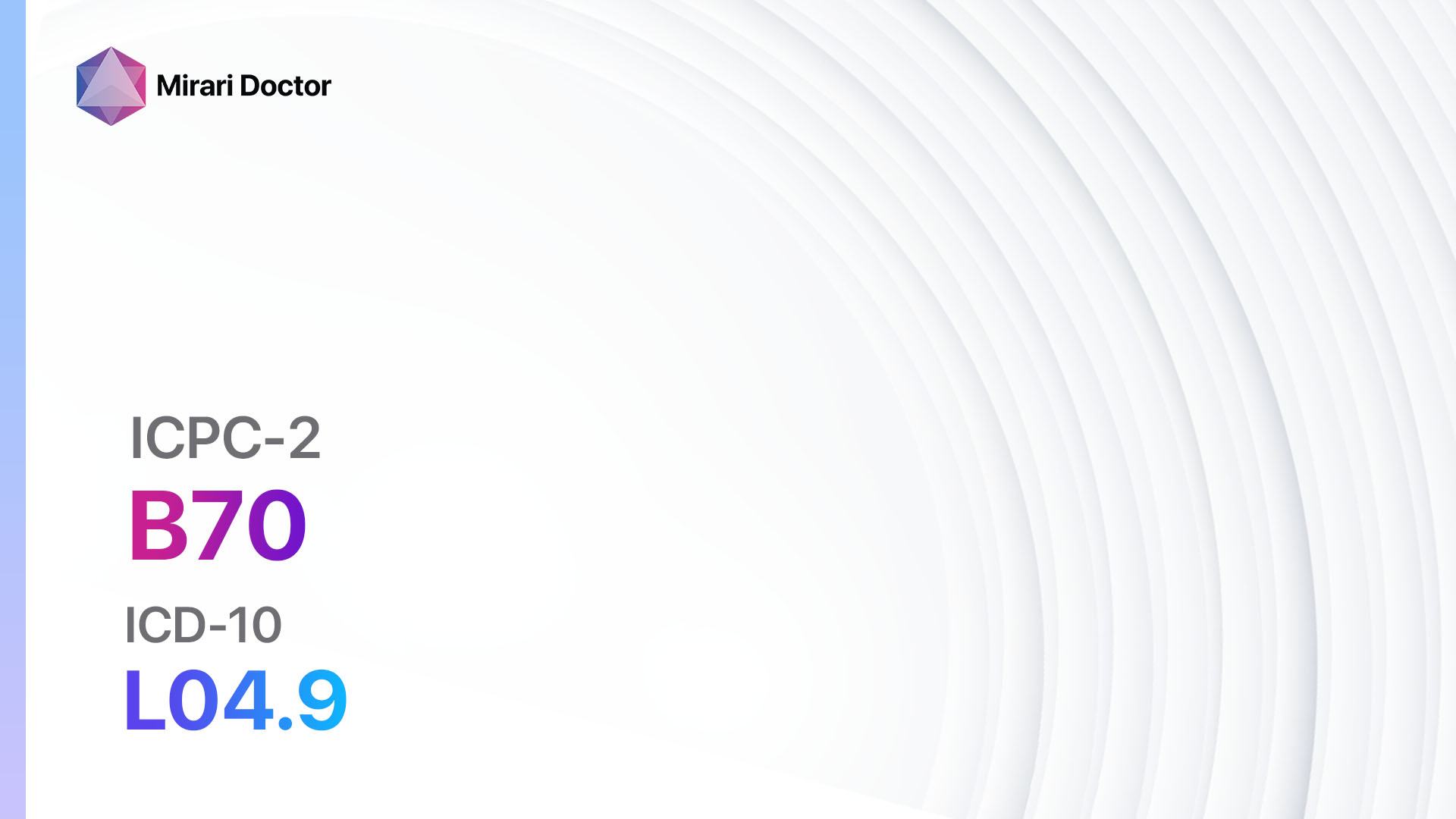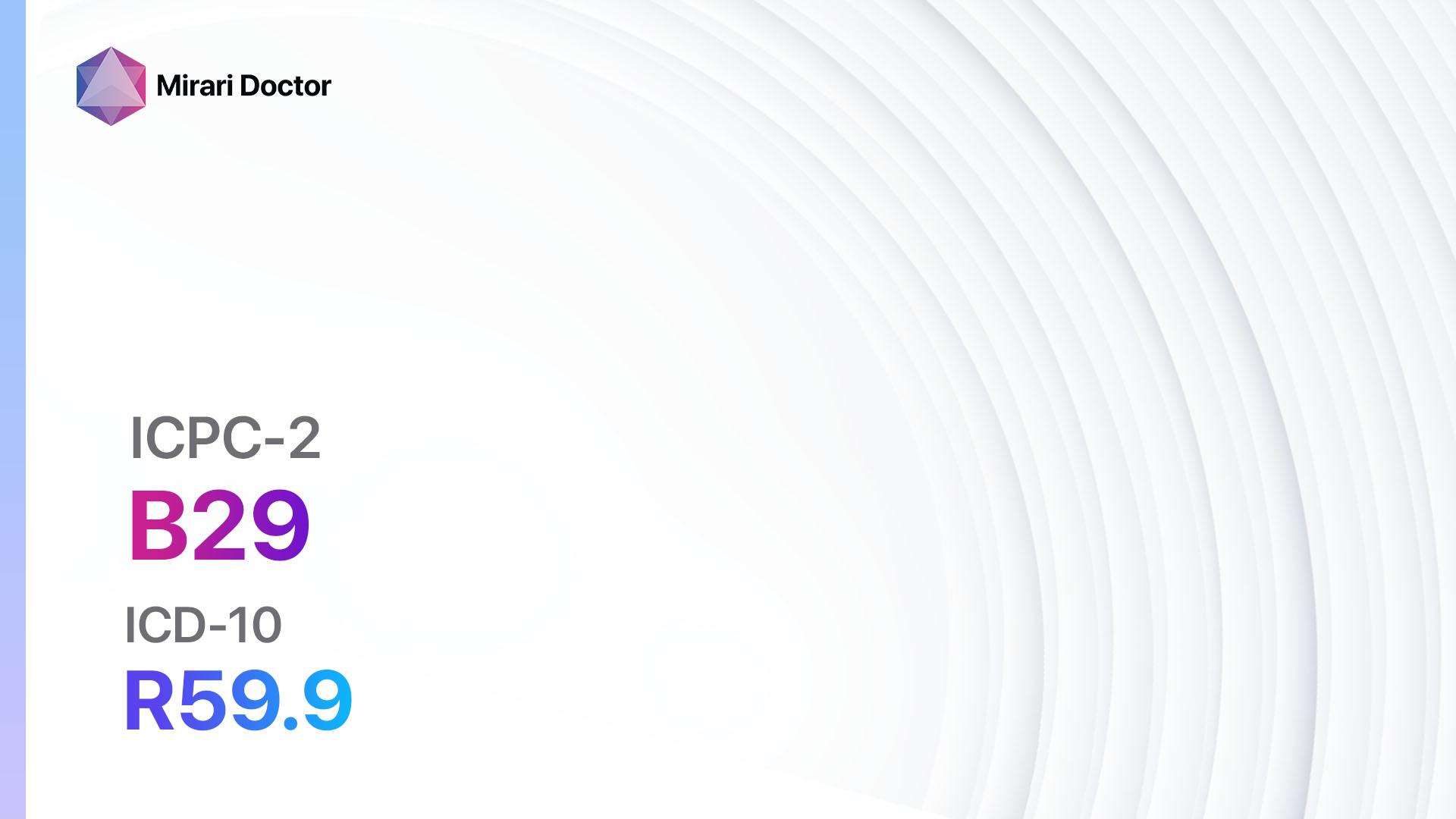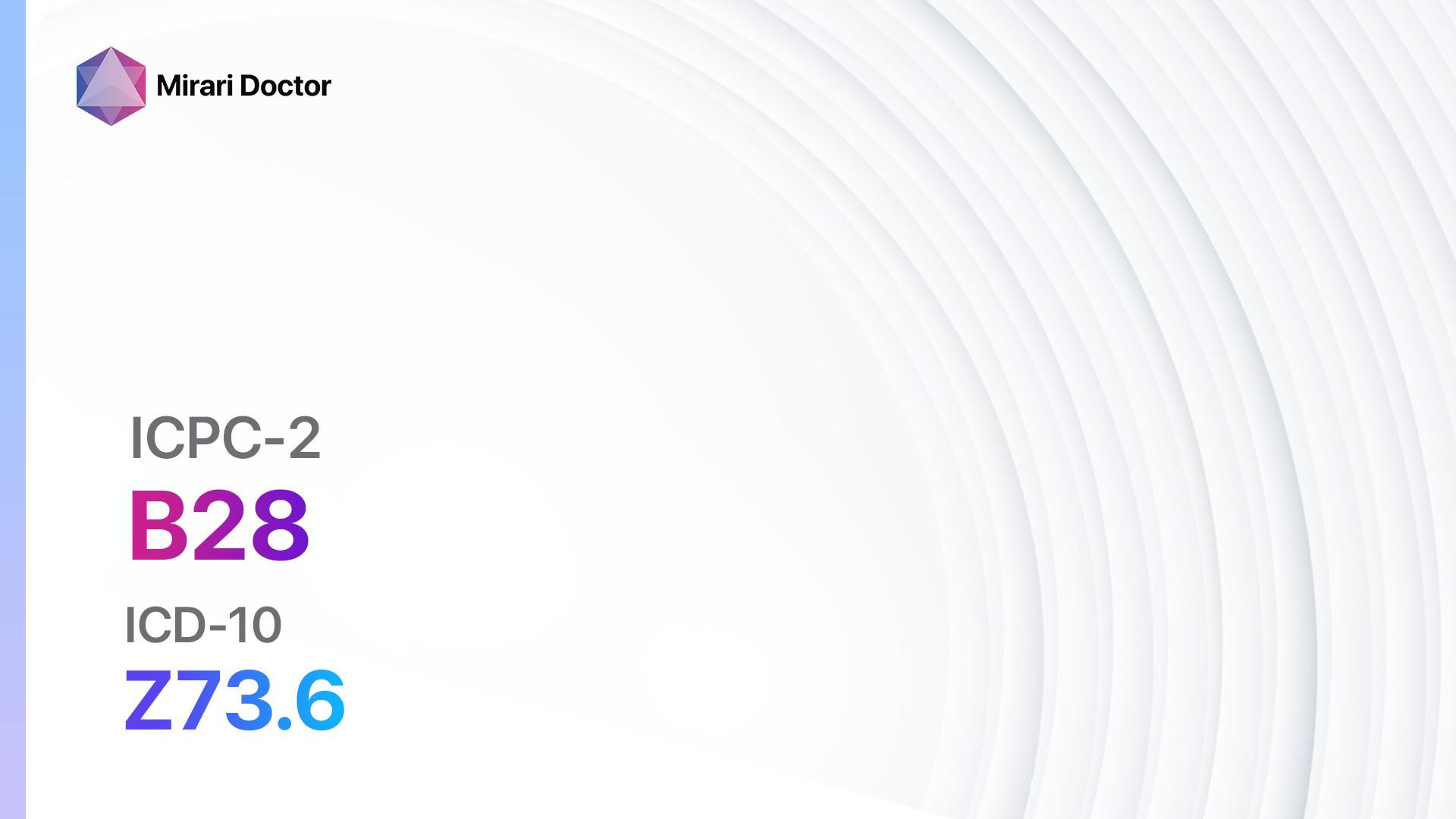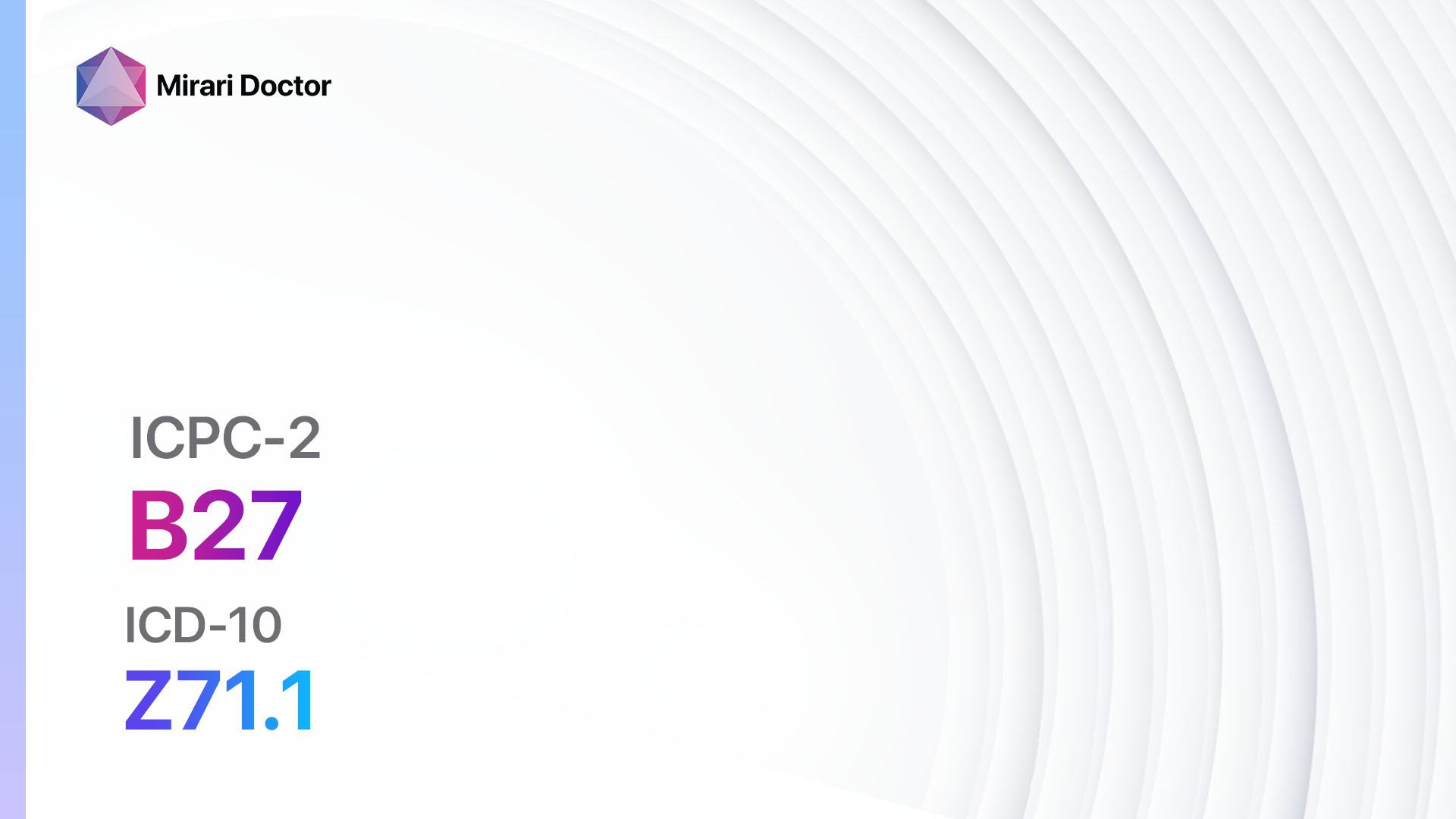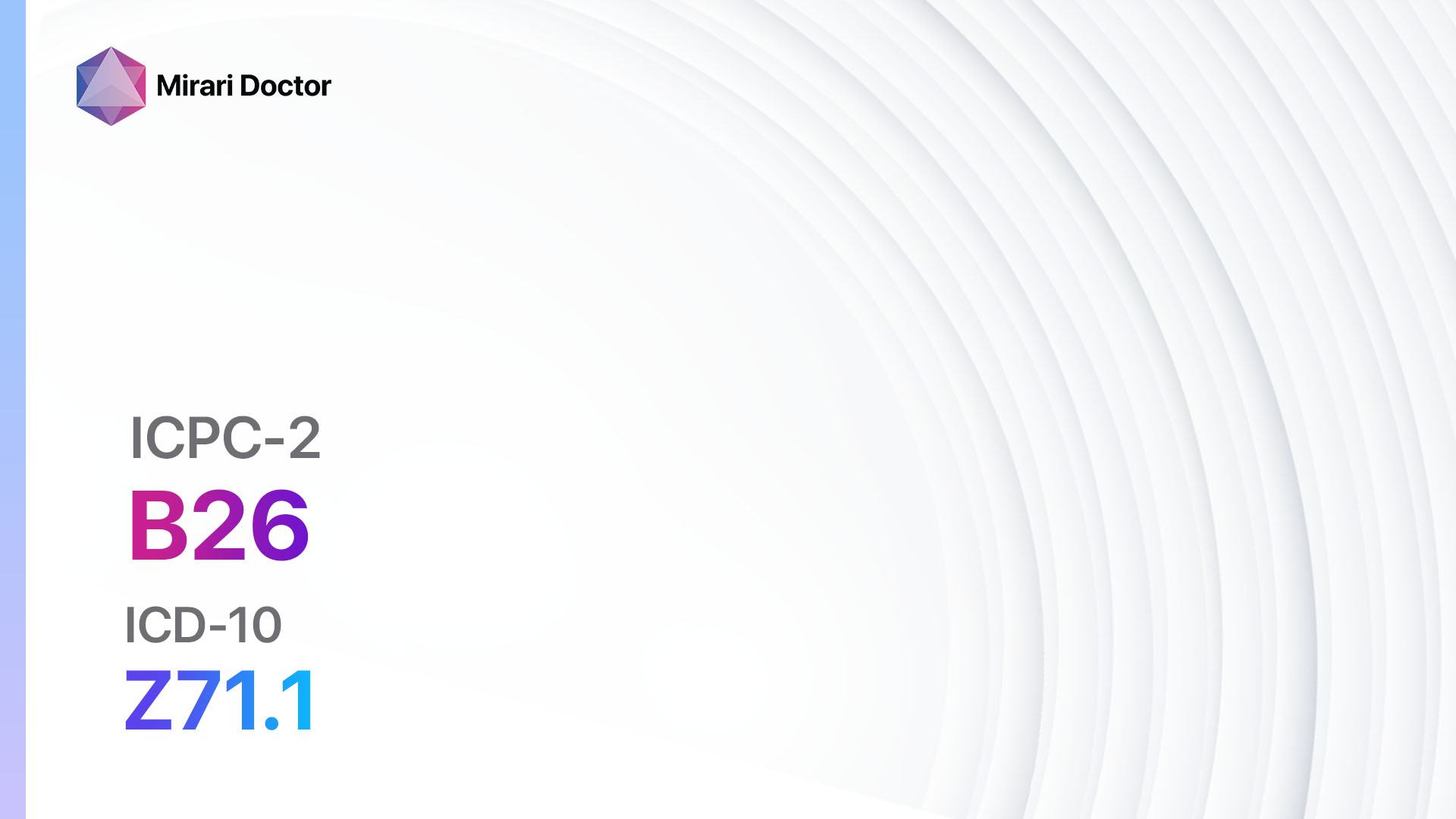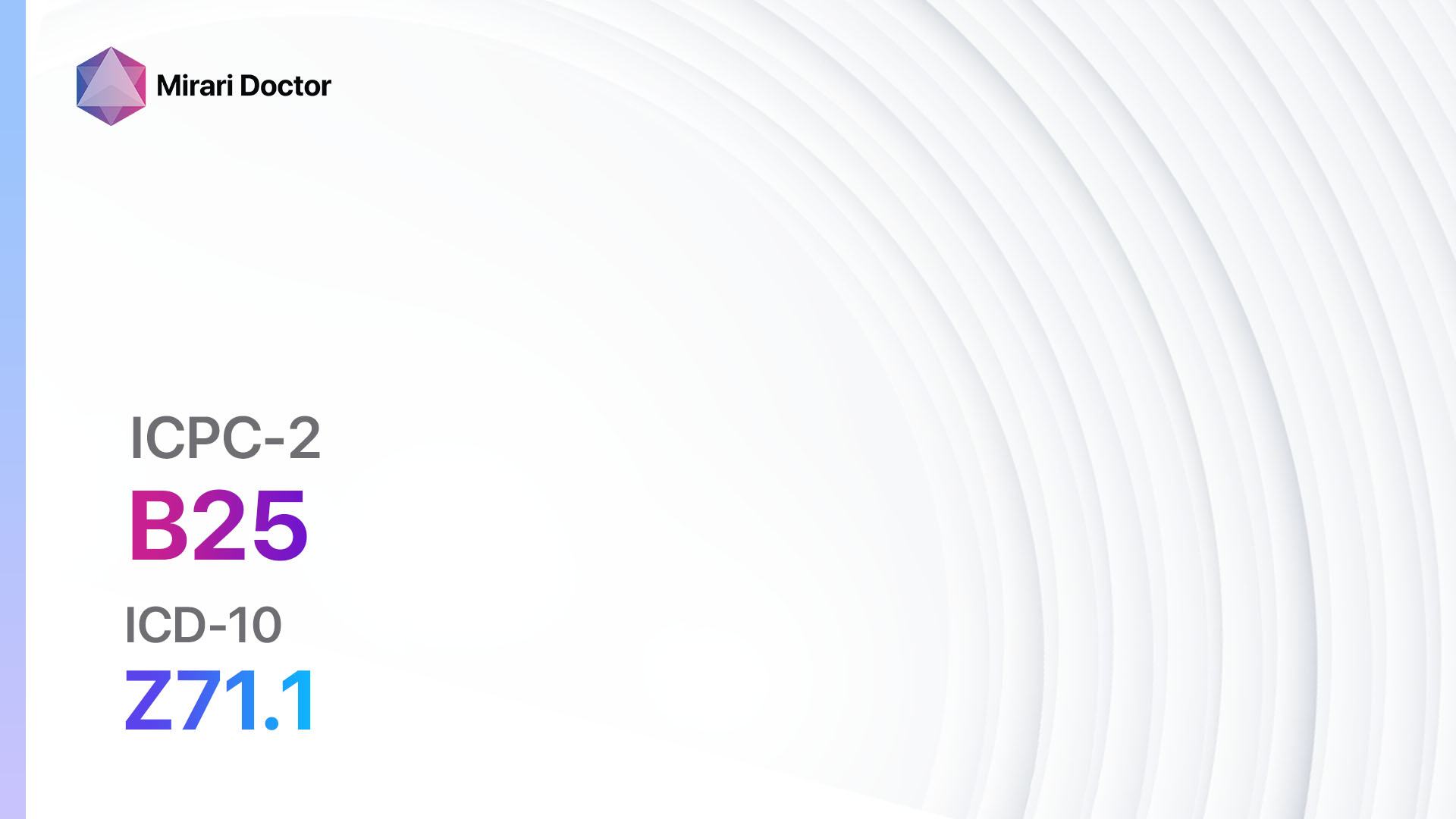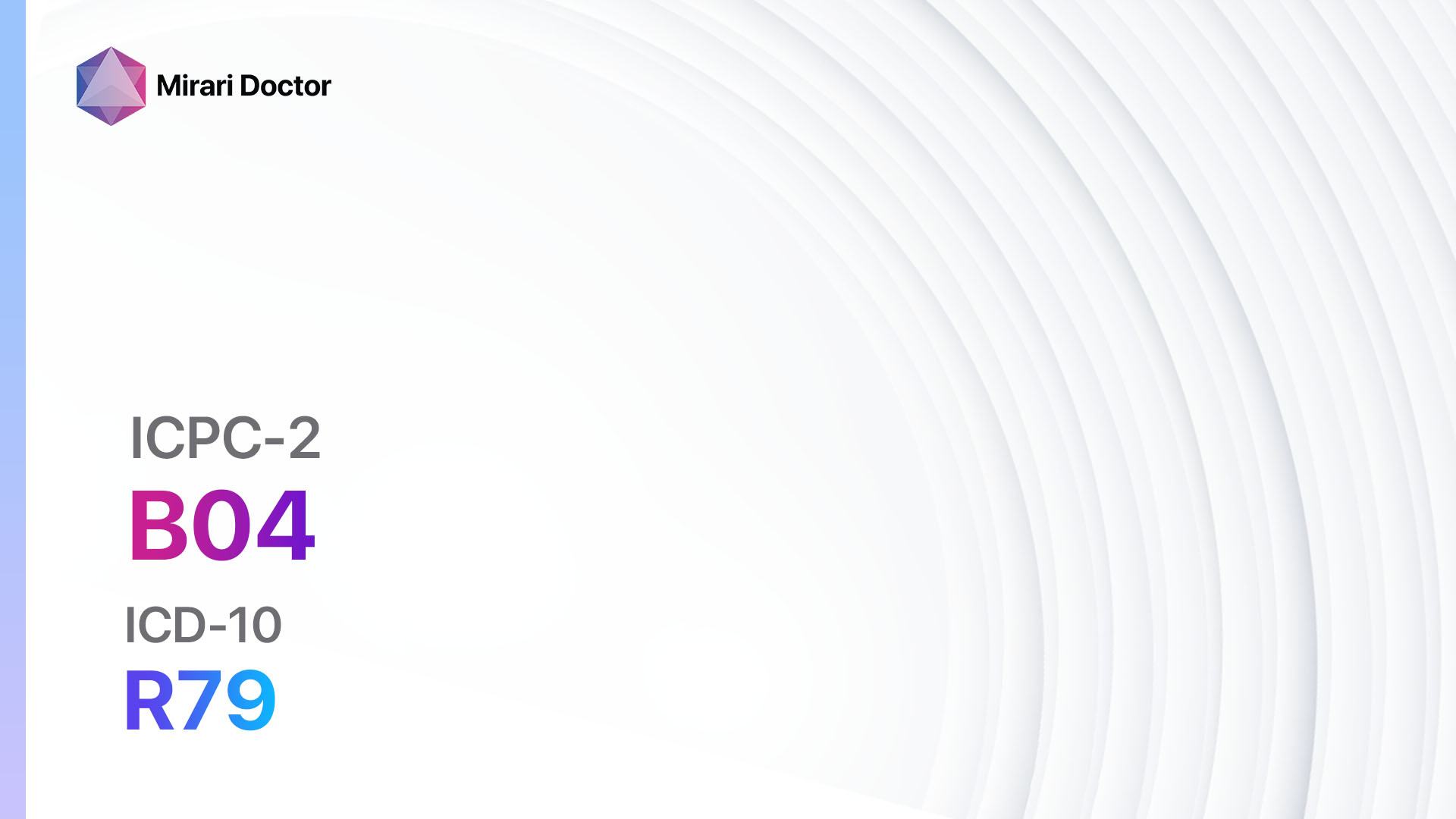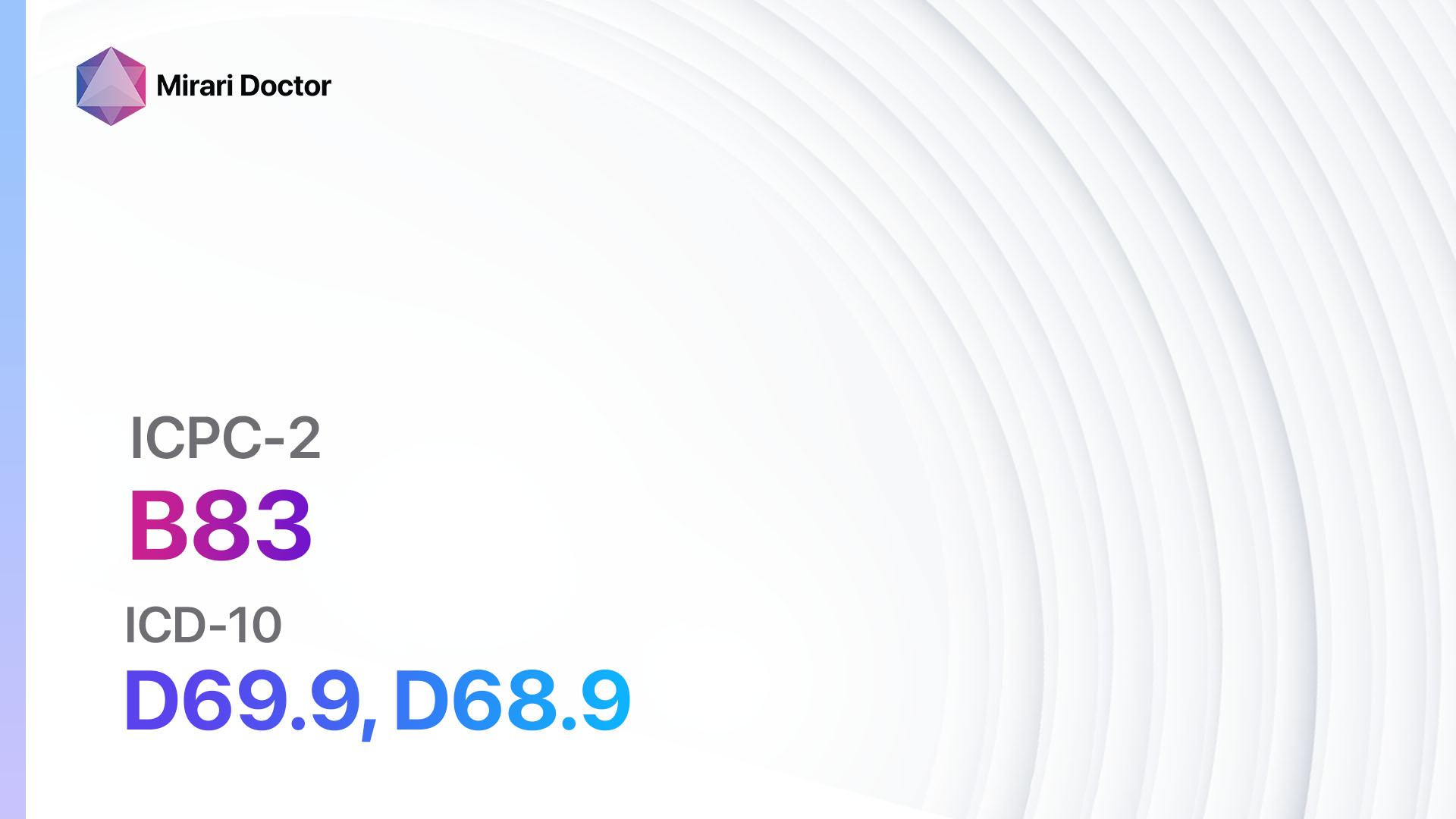
Introduction
Purpura/coagulation defect refers to a condition characterized by abnormal bleeding and the formation of purplish-red spots on the skin or mucous membranes. It is caused by a defect in the coagulation system, which impairs the body’s ability to form blood clots[1]. This guide aims to provide a comprehensive overview of the diagnosis and management of purpura/coagulation defect.
Codes
- ICPC-2 Code: B83 Purpura/coagulation defect[2]
- ICD-10 Code: D69.9 Haemorrhagic condition, unspecified, D68.9 Coagulation defect, unspecified[3]
Symptoms
- Easy bruising: Patients may experience easy bruising even with minimal trauma[4].
- Petechiae: Small, pinpoint-sized red or purple spots may appear on the skin or mucous membranes[5].
- Purpura: Larger patches of purplish-red discoloration may develop on the skin[6].
- Prolonged bleeding: Patients may experience prolonged bleeding from minor cuts or injuries[7].
- Excessive bleeding: Patients may experience excessive bleeding during or after surgical procedures or dental extractions[8].
Causes
- Inherited coagulation disorders: Conditions such as hemophilia, von Willebrand disease, and factor deficiencies can lead to purpura/coagulation defect[9].
- Acquired coagulation disorders: Conditions such as liver disease, vitamin K deficiency, and certain medications can cause coagulation defects[10].
- Autoimmune disorders: Conditions such as immune thrombocytopenic purpura (ITP) and systemic lupus erythematosus (SLE) can result in purpura/coagulation defect.
Diagnostic Steps
Medical History
- Gather information about the patient’s personal and family medical history, including any history of bleeding disorders or coagulation defects.
- Identify any risk factors, such as recent surgeries, trauma, or medication use, that may contribute to the development of purpura/coagulation defect.
- Assess the patient’s symptoms, including the frequency and severity of bleeding episodes.
Physical Examination
- Perform a thorough physical examination, paying particular attention to the skin and mucous membranes for the presence of petechiae, purpura, or other signs of bleeding.
- Check for signs of anemia, such as pale skin or fatigue.
- Assess the patient’s joints for signs of hemarthrosis (bleeding into the joints).
Laboratory Tests
- Complete blood count (CBC): A CBC can help identify abnormalities in the number and function of blood cells, such as low platelet count or abnormal clotting factors.
- Coagulation profile: This test measures the patient’s clotting time and assesses the function of various clotting factors.
- Bleeding time: This test measures the time it takes for a small puncture wound to stop bleeding and can help identify platelet function abnormalities.
- Von Willebrand factor assay: This test measures the level and function of von Willebrand factor, a protein involved in blood clotting.
- Liver function tests: These tests evaluate the liver’s ability to produce clotting factors and identify any liver disease that may be contributing to the coagulation defect.
Diagnostic Imaging
- Imaging studies such as ultrasound, CT scans, or MRIs may be necessary to evaluate internal bleeding or assess the extent of joint damage in patients with hemarthrosis.
Other Tests
- Genetic testing: In cases where an inherited coagulation disorder is suspected, genetic testing may be performed to identify specific gene mutations.
- Biopsy: In certain cases, a skin or bone marrow biopsy may be necessary to evaluate the underlying cause of purpura/coagulation defect.
Follow-up and Patient Education
- Schedule regular follow-up appointments to monitor the patient’s condition and adjust treatment as needed.
- Educate the patient about the signs and symptoms of bleeding and the importance of seeking medical attention promptly.
- Provide information about lifestyle modifications and interventions to minimize the risk of bleeding, such as avoiding certain medications or activities that may increase the risk of injury.
Possible Interventions
Traditional Interventions
Medications:
Top 5 drugs for Purpura/coagulation defect:
- Desmopressin:
- Cost: $50-$100 per vial.
- Contraindications: Known hypersensitivity to desmopressin, hyponatremia.
- Side effects: Headache, nausea, flushing.
- Severe side effects: Seizures, water intoxication.
- Drug interactions: NSAIDs, tricyclic antidepressants.
- Warning: Monitor fluid balance and sodium levels during treatment.
- Antifibrinolytic agents (e.g., Tranexamic acid):
- Cost: $10-$50 per month.
- Contraindications: Active thromboembolic disease, acquired defective color vision.
- Side effects: Nausea, diarrhea, muscle pain.
- Severe side effects: Thromboembolic events, visual disturbances.
- Drug interactions: Oral contraceptives, hormonal replacement therapy.
- Warning: Use with caution in patients with a history of thromboembolic events.
- Immunosuppressive agents (e.g., Prednisone, Azathioprine):
- Cost: Varies depending on the specific medication and dosage.
- Contraindications: Active infections, known hypersensitivity to the medication.
- Side effects: Increased risk of infections, weight gain, mood changes.
- Severe side effects: Adrenal insufficiency, osteoporosis.
- Drug interactions: Nonsteroidal anti-inflammatory drugs (NSAIDs), live vaccines.
- Warning: Long-term use may require monitoring for potential complications.
- Intravenous immunoglobulin (IVIG):
- Cost: $500-$2,000 per infusion.
- Contraindications: Known hypersensitivity to immunoglobulin, selective IgA deficiency.
- Side effects: Headache, fever, chills.
- Severe side effects: Anaphylaxis, renal failure.
- Drug interactions: None reported.
- Warning: Monitor for signs of hypersensitivity reactions during infusion.
- Platelet transfusion:
- Cost: $200-$500 per unit of platelets.
- Contraindications: None in emergency situations, but caution is advised in patients with a history of transfusion reactions.
- Side effects: Allergic reactions, fever.
- Severe side effects: Transfusion-related acute lung injury (TRALI), infection transmission.
- Drug interactions: None reported.
- Warning: Use with caution in patients with a history of platelet refractoriness.
Alternative Drugs:
- Rituximab: A monoclonal antibody that targets B cells and may be used in the treatment of autoimmune-related purpura/coagulation defect.
- Cyclophosphamide: An immunosuppressive agent that may be used in severe cases of autoimmune-related purpura/coagulation defect.
- Eltrombopag: A thrombopoietin receptor agonist that can stimulate platelet production in patients with low platelet counts.
- Fresh frozen plasma: Contains clotting factors and may be used in patients with coagulation factor deficiencies.
- Recombinant factor VIII or IX: Used in the treatment of hemophilia A or B, respectively.
Surgical Procedures:
- Splenectomy: In cases of immune thrombocytopenic purpura (ITP) or other autoimmune-related purpura/coagulation defects, splenectomy may be considered to remove the source of platelet destruction. Cost: $10,000-$30,000.
- Joint replacement surgery: In patients with severe hemarthrosis and joint damage, joint replacement surgery may be necessary to improve mobility and reduce pain. Cost: $20,000-$50,000 per joint.
Alternative Interventions
- Acupuncture: May help improve blood flow and reduce pain. Cost: $60-$120 per session.
- Chelation therapy: Controversial treatment involving the administration of chelating agents to remove heavy metals from the body. Cost: $75-$150 per session.
- Hyperbaric oxygen therapy: Involves breathing pure oxygen in a pressurized chamber to increase oxygen delivery to tissues. Cost: $200-$300 per session.
- Herbal supplements: Some herbs, such as turmeric and ginger, may have potential benefits for improving blood circulation and reducing inflammation. Cost: Varies depending on the specific supplement.
- Homeopathic remedies: Certain homeopathic remedies, such as Arnica montana, may be used to reduce bruising and promote healing. Cost: Varies depending on the specific remedy.
Lifestyle Interventions
- Avoid activities that may increase the risk of injury or bleeding, such as contact sports or heavy lifting.
- Maintain a healthy diet rich in fruits, vegetables, and whole grains to support overall health and immune function.
- Engage in regular exercise to improve cardiovascular health and promote blood circulation.
- Manage stress through techniques such as meditation, deep breathing, or yoga to reduce the risk of stress-induced bleeding episodes.
- Avoid medications that may increase the risk of bleeding, such as nonsteroidal anti-inflammatory drugs (NSAIDs) or anticoagulants.
It is important to note that the cost ranges provided are approximate and may vary depending on the location and availability of the interventions.
Mirari Cold Plasma Alternative Intervention
Understanding Mirari Cold Plasma
- Safe and Non-Invasive Treatment: Mirari Cold Plasma is a safe and non-invasive treatment option for various skin conditions. It does not require incisions, minimizing the risk of scarring, bleeding, or tissue damage.
- Efficient Extraction of Foreign Bodies: Mirari Cold Plasma facilitates the removal of foreign bodies from the skin by degrading and dissociating organic matter, allowing easier access and extraction.
- Pain Reduction and Comfort: Mirari Cold Plasma has a local analgesic effect, providing pain relief during the treatment, making it more comfortable for the patient.
- Reduced Risk of Infection: Mirari Cold Plasma has antimicrobial properties, effectively killing bacteria and reducing the risk of infection.
- Accelerated Healing and Minimal Scarring: Mirari Cold Plasma stimulates wound healing and tissue regeneration, reducing healing time and minimizing the formation of scars.
Mirari Cold Plasma Prescription
Video instructions for using Mirari Cold Plasma Device – B83 Purpura/coagulation defect (ICD-10:D69.9, D68.9)
| Mild | Moderate | Severe |
| Mode setting: 1 (Infection) Location: 3 (Kidney, Liver & Spleen) Morning: 15 minutes, Evening: 15 minutes |
Mode setting: 1 (Infection) Location: 3 (Kidney, Liver & Spleen) Morning: 30 minutes, Lunch: 30 minutes, Evening: 30 minutes |
Mode setting: 1 (Infection) Location: 3 (Kidney, Liver & Spleen) Morning: 30 minutes, Lunch: 30 minutes, Evening: 30 minutes |
| Mode setting: 2 (Wound Healing) Location: 3 (Kidney, Liver & Spleen) Morning: 15 minutes, Evening: 15 minutes |
Mode setting: 2 (Wound Healing) Location: 3 (Kidney, Liver & Spleen) Morning: 30 minutes, Lunch: 30 minutes, Evening: 30 minutes |
Mode setting: 2 (Wound Healing) Location: 3 (Kidney, Liver & Spleen) Morning: 30 minutes, Lunch: 30 minutes, Evening: 30 minutes |
| Mode setting: 7 (Immunotherapy) Location: 7 (Neuro system & ENT) Morning: 15 minutes, Evening: 15 minutes |
Mode setting: 7 (Immunotherapy) Location: 7 (Neuro system & ENT) Morning: 30 minutes, Lunch: 30 minutes, Evening: 30 minutes |
Mode setting: 7 (Immunotherapy) Location: 7 (Neuro system & ENT) Morning: 30 minutes, Lunch: 30 minutes, Evening: 30 minutes |
| Total Morning: 45 minutes approx. $7.50 USD, Evening: 45 minutes approx. $7.50 USD |
Total Morning: 90 minutes approx. $15 USD, Lunch: 90 minutes approx. $15 USD, Evening: 90 minutes approx. $15 USD |
Total Morning: 90 minutes approx. $15 USD, Lunch: 90 minutes approx. $15 USD, Evening: 90 minutes approx. $15 USD |
| Usual treatment for 7-60 days approx. $105 USD – $900 USD | Usual treatment for 6-8 weeks approx. $1,890 USD – $2,520 USD |
Usual treatment for 3-6 months approx. $4,050 USD – $8,100 USD
|
 |
|
Use the Mirari Cold Plasma device to treat Purpura/coagulation defect effectively.
WARNING: MIRARI COLD PLASMA IS DESIGNED FOR THE HUMAN BODY WITHOUT ANY ARTIFICIAL OR THIRD PARTY PRODUCTS. USE OF OTHER PRODUCTS IN COMBINATION WITH MIRARI COLD PLASMA MAY CAUSE UNPREDICTABLE EFFECTS, HARM OR INJURY. PLEASE CONSULT A MEDICAL PROFESSIONAL BEFORE COMBINING ANY OTHER PRODUCTS WITH USE OF MIRARI.
Step 1: Cleanse the Skin
- Start by cleaning the affected area of the skin with a gentle cleanser or mild soap and water. Gently pat the area dry with a clean towel.
Step 2: Prepare the Mirari Cold Plasma device
- Ensure that the Mirari Cold Plasma device is fully charged or has fresh batteries as per the manufacturer’s instructions. Make sure the device is clean and in good working condition.
- Switch on the Mirari device using the power button or by following the specific instructions provided with the device.
- Some Mirari devices may have adjustable settings for intensity or treatment duration. Follow the manufacturer’s instructions to select the appropriate settings based on your needs and the recommended guidelines.
Step 3: Apply the Device
- Place the Mirari device in direct contact with the affected area of the skin. Gently glide or hold the device over the skin surface, ensuring even coverage of the area experiencing.
- Slowly move the Mirari device in a circular motion or follow a specific pattern as indicated in the user manual. This helps ensure thorough treatment coverage.
Step 4: Monitor and Assess:
- Keep track of your progress and evaluate the effectiveness of the Mirari device in managing your Purpura/coagulation defect. If you have any concerns or notice any adverse reactions, consult with your health care professional.
Note
This guide is for informational purposes only and should not replace the advice of a medical professional. Always consult with your healthcare provider or a qualified medical professional for personal advice, diagnosis, or treatment. Do not solely rely on the information presented here for decisions about your health. Use of this information is at your own risk. The authors of this guide, nor any associated entities or platforms, are not responsible for any potential adverse effects or outcomes based on the content.
Mirari Cold Plasma System Disclaimer
- Purpose: The Mirari Cold Plasma System is a Class 2 medical device designed for use by trained healthcare professionals. It is registered for use in Thailand and Vietnam. It is not intended for use outside of these locations.
- Informational Use: The content and information provided with the device are for educational and informational purposes only. They are not a substitute for professional medical advice or care.
- Variable Outcomes: While the device is approved for specific uses, individual outcomes can differ. We do not assert or guarantee specific medical outcomes.
- Consultation: Prior to utilizing the device or making decisions based on its content, it is essential to consult with a Certified Mirari Tele-Therapist and your medical healthcare provider regarding specific protocols.
- Liability: By using this device, users are acknowledging and accepting all potential risks. Neither the manufacturer nor the distributor will be held accountable for any adverse reactions, injuries, or damages stemming from its use.
- Geographical Availability: This device has received approval for designated purposes by the Thai and Vietnam FDA. As of now, outside of Thailand and Vietnam, the Mirari Cold Plasma System is not available for purchase or use.
References
- Matsumoto, M., Miyakawa, Y., Kokame, K., et al. (2023). Diagnostic and treatment guidelines for thrombotic thrombocytopenic purpura (TTP) in Japan 2023. Int J Hematol, 118, 529–546.
- ICPC-2 – English. (n.d.). Retrieved from https://www.gesy.org.cy/el-gr/annualreport/icpc-2-english1-10.pdf
- ICD-10 code: D69.9 Haemorrhagic condition, unspecified. (n.d.). Retrieved from https://gesund.bund.de/en/icd-code-search/d69-9
- Mumford, A. D., Ackroyd, S., Alikhan, R., et al. (2014). Guideline for the diagnosis and management of the rare coagulation disorders: A United Kingdom Haemophilia Centre Doctors’ Organization guideline on behalf of the British Committee for Standards in Haematology. British Journal of Haematology, 167(3), 304-326.
- Purpura fulminans: Recognition, diagnosis and management. (2011). Archives of Disease in Childhood, 96(11), 1066-1071.
- Purpura Fulminans Treatment & Management. (n.d.). Retrieved from https://emedicine.medscape.com/article/2202749-treatment
- Purpura fulminans: Recognition, diagnosis and management. (2011). Archives of Disease in Childhood, 96(11), 1066-1071.
- Mumford, A. D., Ackroyd, S., Alikhan, R., et al. (2014). Guideline for the diagnosis and management of the rare coagulation disorders: A United Kingdom Haemophilia Centre Doctors’ Organization guideline on behalf of the British Committee for Standards in Haematology. British Journal of Haematology, 167(3), 304-326.
- Mumford, A. D., Ackroyd, S., Alikhan, R., et al. (2014). Guideline for the diagnosis and management of the rare coagulation disorders: A United Kingdom Haemophilia Centre Doctors’ Organization guideline on behalf of the British Committee for Standards in Haematology. British Journal of Haematology, 167(3), 304-326.
- Purpura Fulminans Treatment & Management. (n.d.). Retrieved from https://emedicine.medscape.com/article/2202749-treatment
Related articles
Made in USA


